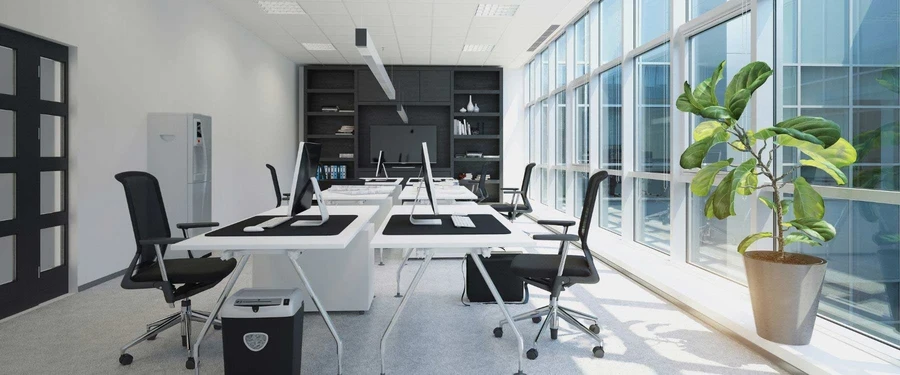SOCOTEC offers carbon reduction strategies and life cycle assessments (LCA) services combining expert services including energy modeling and analysis, building envelope consulting, commissioning and auditing (MEP and Envelope), and “green” consulting services (to address synergistic air quality and material issues).
At SOCOTEC, we help building owners, developers, and design teams achieve ambitious carbon reduction goals through a proven combination of technical expertise, strategic planning, and innovative solutions. Our personnel have a long history – and therefore significant experience - with low energy buildings. We have a broad view of current advances in energy efficiency and carbon, and as important, from experience, we know what actually works.
Comprehensive Carbon Reduction Services
From life cycle assessment (LCA) to targeted carbon reduction strategies, we work to lower both operational and embodied carbon, improve building performance, and meet evolving regulatory requirements. We offer a comprehensive suite of consulting and engineering solutions, including:
- Energy modeling and analysis to guide design decisions
- Building envelope consulting for improved thermal performance
- Commissioning and auditing (MEP and envelope) for performance verification
- Green building consulting integrating air quality, materials, and sustainability goals
- Carbon reduction process development, including all-electric HVAC strategies
- Geothermal and renewable energy feasibility studies and implementation
A Kit of Advanced Tools and Equipment
We use a range of tools and procedures on and off the field. They range from:
- An analysis of the energy bills using databases and error analysis in the M&V projects, effect of retrofits on envelope, from THERM for simple conditions, to 3D conduction modeling, CFD and WUFI moisture transfer
- We model lighting and daylighting, thermal comfort, solar radiation, air movement around and within buildings, etc.
- For energy use and carbon, we employ a range of software programs, such as DOE 2.2 and EnergyPlus
- For analyzing piping and equipment in existing buildings, we use in-house eddy current testing apparatus, ultrasonic thickness testers and metallurgical specialists with scanning electron microscopes for advanced studies

Talk to our experts

Our Approach: Practical, Data-Driven, People-Centric

Global Consideration
We examine the possibilities for carbon reduction globally – and in tandem with the other environmental goals (e.g., water, IAQ)

Landlord-Tenant Collaboration
We examine interactions with the landlord in leased spaces, and assess the possibility of cooperation.

Building Renovations
Our in-house building envelope group and its substantial expertise in existing building renovation can support the evaluation process with input on building envelope improvement opportunities at the same time while evaluating HVAC. In order to implement substantial energy efficiency improvements and carbon reductions, HVAC and building envelope solutions work together to generate enhanced benefits.

Lighting
For Lighting, we look at opportunities now including addressable lighting, but be aware that LPD will continue to be reduced – which increases the importance of heating, and of part-load operation of HVAC systems.

HVAC
For HVAC, we understand flexibility is important to change to all-electric in the intermediate terms when not possible now.
Navigating Local Carbon Reduction Regulations
New York City – Local Law 97 (LL97)
Starting in 2025, New York City’s Local Law 97 Greenhouse Gas Emissions Reduction, will impose strict greenhouse gas limits on buildings over 25,000 sq. ft.—including commercial, multifamily, co-op, and condo properties—with fines of $268 per excess ton of CO₂e. Compliance may require energy efficiency upgrades, renewable energy integration, a robust decarbonization plan, and expert guidance.
SOCOTEC helps owners meet the 2024–2025 limit of 9.87 kg CO₂e/sq. ft. and prepare for the more stringent 2029–2030 target of 5.26 kg CO₂e/sq. ft.
Our selected projects include:
- 101 Park Avenue
- 30 Rockefeller Center – 6 tenant floors for a global financial firm
- The Union League Club
- Residential portfolio of 26 buildings
Washington State - CBPS
The Clean Buildings Performance Standard was signed into Washington law with the objective of lowering costs and pollution from fossil fuel consumption in the state’s large existing buildings, multifamily buildings, and campus buildings. Building owners must now meet specific energy use intensity (EUI) targets, with phased compliance deadlines.
We assist owners in:
- Benchmarking current performance
- Implementing deep energy retrofits
- Developing actionable carbon reduction plans aligned with state targets
Other State and Local Laws
Across the U.S., from Florida’s emerging energy codes to California’s Title 24 and decarbonization mandates, SOCOTEC provides tailored carbon reduction strategies to align with local requirements, enhance building performance, and support eligibility for carbon reduction credits.
Projects in Carbon Reduction Strategies
Partner with SOCOTEC for Your Carbon Reduction Goals
From concept to operation, we deliver practical, measurable solutions for carbon reduction in buildings—helping you meet compliance requirements, lower costs, and enhance long-term asset value.
Want to know more about our Carbon Reduction & Life Cycle Assessment services?






